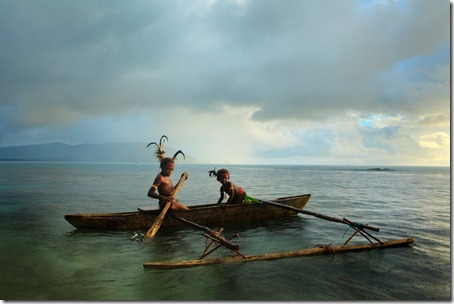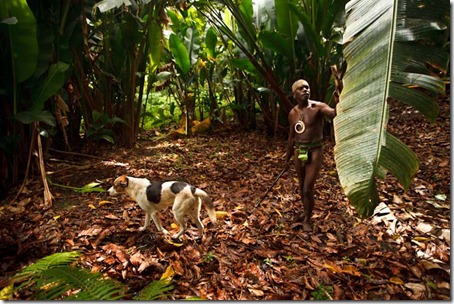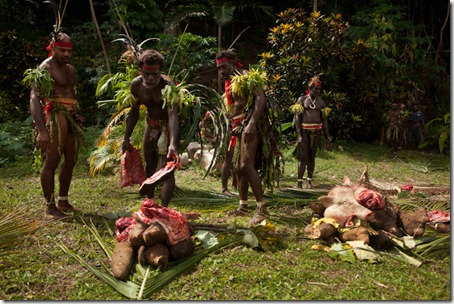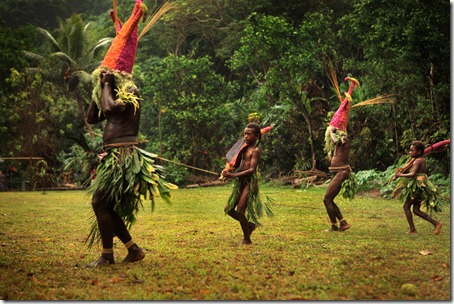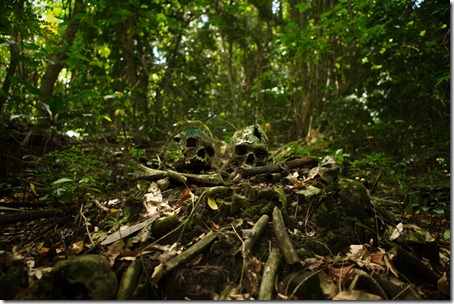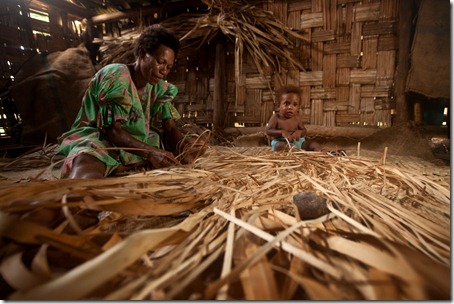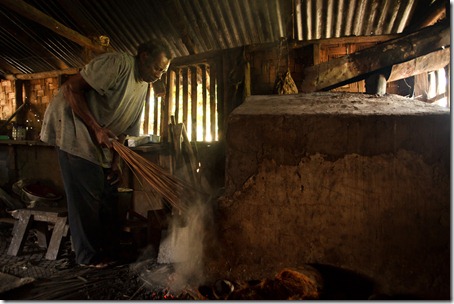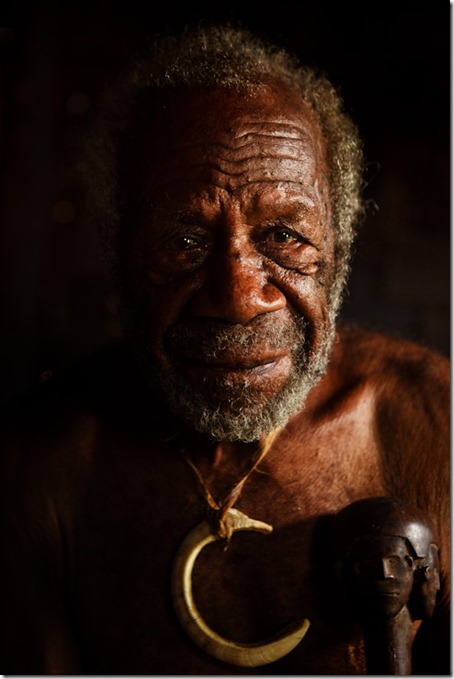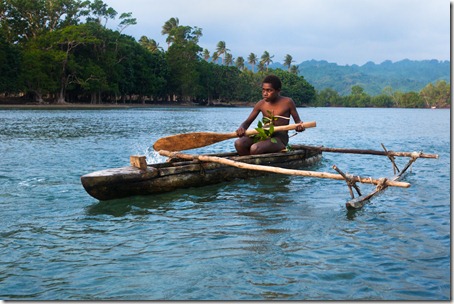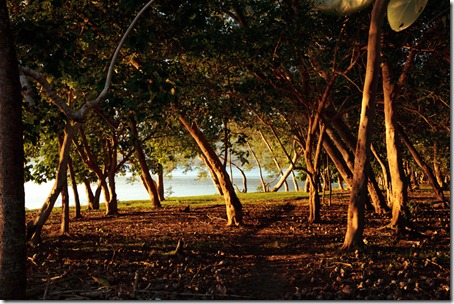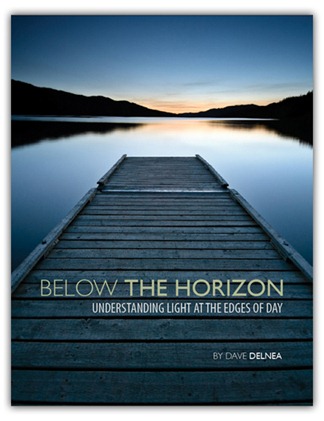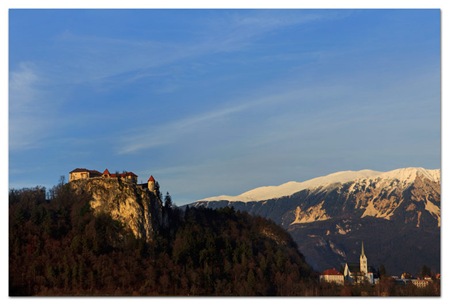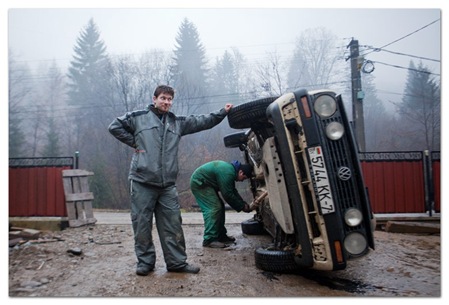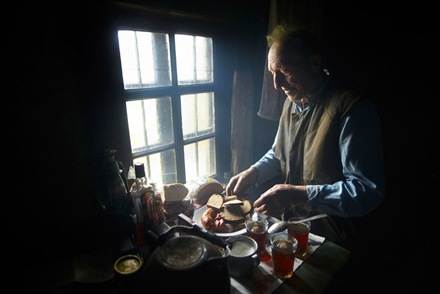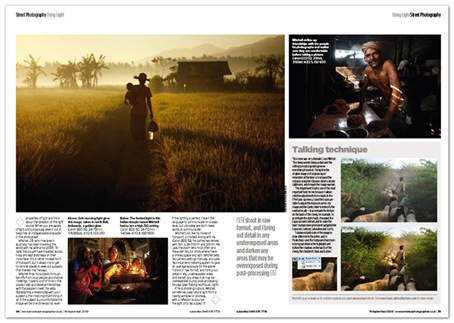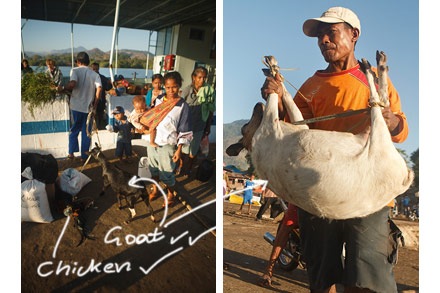It’s been a long time since I wanted to share this, and, today I finally can! I’ve got a new eBook out and even more exciting is the fact that I’m launching it through my new website Eyevoyage (created with a friend of mine). The name, I hope evokes thoughts of a journey with your eyes. I also hope that it’ll become the go-to place for aspiring travel photographers and anyone interested in travel and great photography in general.
My Love-Hate Relationship with Ethiopa: A Report
The fascinating cultures, the breathtaking landscapes, the ever present feeling that you are in a different time, a different dimension—this is what I absolutely love about Ethiopia. The constant feeling of being a human piggy-bank, the challenges in doing the simplest of things, the often occurring feeling that your new “friends” are measuring you up to see what they can extract from you—this is what I’ve come to hate beyond words about the country. I’ve been in Ethiopia for a bit over four months now. I know that many of the readers of this blog are photographers and travelers, some of whom have aspirations to come here. For this reason, I feel that I should write an account of sorts. One that is fairly uncensored and touches on the good, the not so good and the plain ugly sides of this incredible and incredibly challenging country.
New e-book "Getting Published in Photography Magazines" and the "Going Pro" Kit
A few days in the Cordillera and some thoughts
The crazy, frustrating world of ours

I’ve been back in Sydney for some time now. With all the trips back and forth over the years, it is no longer strange to be jump between these worlds, which are so different from each other.
I keep thinking of Vanuatu. In particular I’ve been thinking of the big question of development there, the tourism development or whatever development for that matter. As I had mentioned in past posts I photographed some people and places in order to help promote a couple of the lesser known regions to tourists, in a sense to develop tourism there.
Before I left Vanuatu I managed to get a photo story into Air Vanuatu’s inflight magazine “Island Spirit”. Besides being on the airplanes the publication can be found at every single hotel and guesthouse around the bigger towns of the country. That will be a good little push for George and South West Bay, hopefully. But I keep thinking about where the potential development, where all that interaction with tourists and all the building of new guesthouses, new facilities will lead. Will it really be positive, as I perhaps naively hope? To be totally honest, the country for most part is perfect, or rather it would be perfect, if there weren’t these conflicting views that the modern, developed, “white-man” world is bringing.
Prior to leaving the island of Santo I met an interesting young anthropologist. He had a very cynical view of where things might head. History, he said showed that development had never been good for societies similar to that of Vanuatu. Urban drift, alcohol consumption, increased crime rates - these were all byproducts of the so called modernization. I could only imagine in horror how the wonderful places I’d been to might be affected if things don’t go quite as planned.
In some ways I agree with the anthropologist, but another part of me feels that at times the thinking and reasoning of academics is quite unrealistic. He suggested that it would be better to keep things as they are, the locals don’t need all this crap that we have, they’ve been living for hundreds of years without it. Agreed. But then I had been in Vanuatu long enough and had spoken to enough locals who lived in between these two worlds - the modern and the ancient and they were desperate to see more of our world, to do those things that the “white-men” get to do. Young, a good friend I made on the very remote Rah Island had worked in Port Vila - the capital of Vanuatu for a few years, he acquired a taste for TV and he desperately wanted to see different parts of the world. When I told him that what they have is special, that they don’t need to seek happiness elsewhere or to change things at home, he replied “Yes, but I want to see why it’s so special here. I want to see other countries and to be able to decide for myself.” Fair enough, I think.
He also said something that was very simple and ultimately really insightful. “The white people used to come here and say - you must all change, become modern, wear clothes, stop your rituals, worship Jesus. Now they come and say - go back to the ways of the past, become more traditional, we want to see more of your culture. What are we to do? We are very confused now! What is it exactly that you want from us?” What Young said reflects the way many young Ni Vanutu people from the islands must feel. He’s confused and somewhat frustrated, and; who’s to say that development will answer his questions? Who’s to say that Port Villa isn’t going to become the next Port Moresby (considered by many one of the least livable cities in the world)? If Port Vila is indeed heading that way, tourism will be a pretty small concern in comparison the multitude of serious problems that will arise.
And so I keep asking myself. On the one hand; what is the point of development in a place like Vanuatu? On the other hand; what is the point of preserving things, if all the young locals want to do is watch “Rambo” and “Lost”? Can they really be blamed? Are they lesser people than us that we should decide what’s good for them and what’s not? And then ultimately I ask myself; what is the point of doing what I started? Meaning helping the locals attract more tourists to their areas and in effect “develop” them.
I guess I find comfort in one story that was told to me by an American NGO worker who I met along my journey. He had the same dilemma as me at the beginning of what has now been a four year commitment to developing medical centers around the country. He once asked a more experienced NGO worker: “What is the point of what we’re doing? These people survived for so long without us. Are we just f--cking up their world, by pushing them forward and changing their ideology with what we are doing?” To this he got the following reply. “Development is inevitable, you aren’t going to be able to stop things or go back to the stone age, but things can move forward in different ways. Development can put everything on its head and basically destroy an entire society or it can be brought on more gently, more gradually and that will lead to a much smoother transition and a less disastrous result. You’re one of the people who’s trying to achieve the latter and that is a good thing.”
I hope that my involvement would put me in the latter category too. I should also mention that in Vanuatu development has so far only been “passed down” to the locals from the foreigners that have invested in the country (or before colonized it). The foreigners are in power, while the locals are mostly picking up the crumbs of the benefits of this “development” and they are often having to do this away from home, because development is centered only around the capital and the island of Espiritu Santo.
Tourism outside of the main islands, would actually put a lot of people in an entirely different position. They would not have to go outside to earn their money, they would become business owners (some already are), they would be empowered to make their decisions and whether that would be to go back to the ways of the past or to watch DVDs well, that’s a decision which I believe they deserve to make.
Well, that’s about it for this post. I needed to get those thoughts out of the system. I invite anyone who has read this post in full to share their opinions; whether cynical or not I am very interested to read what other people are thinking. What have some of you learned from your journeys or perhaps from living in countries which have seen rapid development recently?
You might not hear all that much from me in the coming weeks (though I’ll try). I’ve been busy archiving my collection with the aim of putting up on Photoshelter. I’ll also be slightly redesigning the website and the blog. Good changes are on their way. Stay tuned.
South West Bay, Malekula – Where pristine nature meets ancient traditions
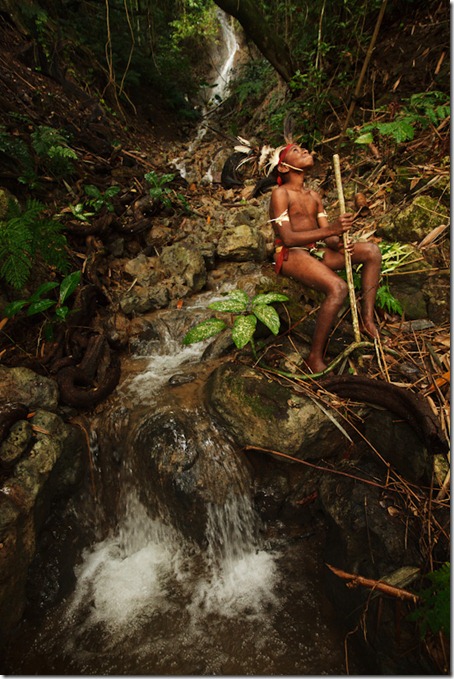 A few posts ago I mentioned that I got involved in helping some locals with the promotion of their regions as tourism destinations through my photographs. In fact I not only ended up doing the photos, but also dished out quite a lot of advice, since the people on most islands of Vanuatu (besides two main ones – Vila and Santo), well they don’t have much of an idea of what foreigners actually want and their misconceptions could not be further from the truth. That is of course very understandable, since their culture and general approach to life could not be much more different from that of “white people” or most foreigners in general.
A few posts ago I mentioned that I got involved in helping some locals with the promotion of their regions as tourism destinations through my photographs. In fact I not only ended up doing the photos, but also dished out quite a lot of advice, since the people on most islands of Vanuatu (besides two main ones – Vila and Santo), well they don’t have much of an idea of what foreigners actually want and their misconceptions could not be further from the truth. That is of course very understandable, since their culture and general approach to life could not be much more different from that of “white people” or most foreigners in general.
For the moment and likely for at least five years or more, most of outer islands of Vanuatu (as all the islands outside of Efate where the capital is located are called) are pretty darn far from being “real” tourist destinations. I mean this in the sense that they are not particularly suitable for those who want to relax in comfort, eat well, drink or party. Outside of about three major towns, there’s no electricity, running water is very uncommon and perhaps the most painful thing, at least for me, is that the locals, for most part could not care less about what they eat. There’s no food culture, which equals to no tasty local cuisine as you get in most places around Asia or elsewhere where there is a food culture.
All the minuses aside, Vanuatu offers something that few places offer these days and that is untouched, pristine and absolutely stunning nature. On top of that the people (the Ni-Vanutatu or Ni-Vans, as they call themselves) are some of the most charismatic, friendly and likeable on the planet. There’s also no hassle, no one attempts to sell you crap that you don’t need, no one tries to trick you or rip you off. As much as I love places like India, Nepal and Indonesia, it gets pretty annoying when people constantly see you as a money bag and come up with the most ridiculously creative ways of making you part with your money. You just don’t have that in Vanuatu, at least not yet.
Besides the already mentioned virtues, there’s of course the culture. As I also mentioned in a past post, the culture is undeniably disappearing, but it hasn’t disappeared yet, at least not everywhere. And while there are still places where you can experience this incredible culture in at least some shape or form, you have to go. In some very strange way it appears that the foreign interest in the culture of Vanuatu’s islands has made a lot of Ni-Vans realize just how precious their culture is. At the end of the day, it may very well be tourism which will help ensure that not all is completely lost.
But let me now get specifically to South West Bay. It is one of two regions which I photographed with the aim of helping promote it. As you might have already gathered I am also ready to promote it through my blog and the internet in general, but that doesn’t mean that I’m simply going to sugar-coat everything. I’ll tell the truth, and in this case the truth is good enough to get people to come.
My idea to do this little project came after I met a good man by the name of George Thompson. George was born and grew up in the very remote South West Bay, Malekula. Through some visionary thoughts, hard work and twists of fate he was able to become the leading tour operator and the head of the tourism department in his region. This role even gave George an opportunity to travel to Europe for a tourism expo in the late nineties. He saw places that very few Ni-Vans get to see – France, Germany, Denmark. While he loved the experience, travelling abroad made him realize that things back home were not as bad as some of his fellow countrymen had imagined. Sure, Vanuatu is a poor country by Western standards, but paradoxically there are no homeless people and no one begs for money or food. On top of that the air is fresh and the culture is rich.
When George got back, he had become even more inspired and passionate about showing off his region to the occasional tourists. By 2000 things were looking good, tourist numbers were slowly growing and the income that tourism provided made people’s lives just a little easier. However, things in Vanuatu can change rather quickly. Corruption and “mismanagement” of funds at the higher level are common and around 2004 the nationwide tourism company “Island Safaris” the branch of which George led successfully in South West Bay went down due to “mismanagement”. Tourism numbers started to decline faster than they rose, without the support of a bigger company there was no way that George or the locals could market their region to the outside world. To add even more pain to the dilemma, the airport of South West Bay was sporadically closing and opening, thus making it harder for anyone to get to the area. In a couple of years there were virtually no tourists visiting South West Bay.
Because of George’s past friendships and connections he was able to get a good job, managing a small resort in Port Villa. He had a relatively easy life and a high salary, by Vanuatu standards. George worked at the resort for a couple of years, but soon he became haunted by the thoughts of home. He was away from his family and he knew that while he was having it easy, the people of South West Bay were struggling. He felt pain and guilt and before long he got back to South West Bay with the hopes of reviving the small, but once stable tourism industry that he helped build.
Fast forward to 2010 and things are not looking so bright. Over the past few years tourism has still been near non-existent. Instead of helping bring up the lifestyle of others, George found himself in a similar situation as them. He didn’t tell me his story when I met him, he’s not the kind of person to whine or complain about life, that doesn’t seem to be part of the Ni-Van mentality in general. Instead I got all of this information out of him during the two weeks that I spent in the area, this of course made me even more motivated to help the man in at least some way.
The particular idea about me making some photos came after George showed me some of the past photos of the places in his region sent to him by tourists. According to his stories, the places were beautiful and the people in those places fascinating and so when I saw images that were let’s say not very inspiring I felt a little uninspired myself. I know that I’m not the only one who gets excited about a place by seeing a single beautiful image of it and so with that thought in mind I suggested that we create a little tourism marketing campaign. The campaign would be a combination of documentary images of some of the more photogenic activities, places in the region, as well as some set up shots of the locals dressed in their traditional costumes in their beautiful surroundings.
For me personally the shoots were a reward in themselves. I have been shooting documentary stuff for years and I’m always interested to be placed into new photogenic situations. As far as the set up shots, it was in a sense even more fun to do them. I’d made a couple of short fiction films while at uni and photo shoots of this sort, while fairly new to me were in a some ways similar to making short films. In this case you could say that the shoots were a blend of fiction and documentary (the line was very thin). Our “actors” had to be themselves, they simply had to be in specific locations, wearing costumes which they used to wear in the past and still wear during celebrations or as was customary for the chiefs and some village members while greeting visitors (i.e. tourists). The dances, which are a big thing in the region are performed in similar outfits, (usually more elaborate) so all in all the images we created showed what was most visually exciting about the region of South West Bay and something that the visitors would get a chance to see themselves.
And so let me get to the photos. This is a just a portion of the images I created, you can see more HERE and in the coming months. The image at the top is of one of the boys (Pillison was his name) who I had seen performing the kastom dance at a pig killing ceremony a couple of days earlier. I wanted to photograph him in a similar costume in front of the waterfall, one of the hidden little gems of the area.
Pillison was a great model so we got him and his little mate into a canoe and asked them to row along the shoreline a little. For full impact, I expect this or a variation of this image to be shown in a bigger medium than the 450 pixel photo on a blog. You can get a better view by clicking on the image (to make it larger). Mountains and sea always look dramatic to me and more so when they’re bigger.
This is Chief Ayar again. I blogged about him HERE. I took quite a few shots of this fascinating man. I expect that some of them will be used in something like a brochure, while I’d like to use others, like this one along with images that make up a story, which, if things work out will hopefully appear in some of Vanuatu’s tourism magazines.
A moment from the pig-killing ceremony. During my stay in South West Bay, two chiefs “upgraded” their ranks. Two pigs were killed and meat was shared with the villagers.
Every pig killing is preceded by a traditional or kastom dance. Only certain individuals are allowed to take part. The young are once again being taught the steps of the dances as part of a cultural revival in South West Bay.
For those who like hiking, there’s a fascinating hike to the creepy ancient burial site in the hills above the village of Melmes. The guide, a young chief by the name of John was very passionate in telling us about the history of his people. Below those skulls is a mass burial hole, but before the bodies were placed there they were put onto a high rock. Because John’s tribe thought that they descended from the eagle, they had a little custom associated with this bird. They believed that if the eagle were to eat the eyes of the dead body (when it was placed on the high rock), that person would go directly to paradise, if not, well they go to hell. When I asked John whether many of the dead actually had they’re eyes eaten and went to Paradise, he replied with an uneasy smile – “No, most of our ancestors went to hell.”
Mat-weaving is one of the women’s main occupations. They weave mats for home as well as for sale in big towns like Port Villa in order to generate a small income that usually contributes to the ridiculously high school fees they must pay for their children each year.
Another documentary image taken inside of the village bakery. The baker is cleaning out the ash before putting the bread inside the oven. Once I am home, near a fast connection I’ll try to post some video that I did in this very atmospheric little spot.
George’s uncle is one of the highest chiefs in South West Bay, people like him are an “attraction” in their own right, they are living history and chatting to folks like that is always a highlight of any trip. George’s uncle (his name escapes me, it was a long traditional name, not a Western one) had never had a white man in his house before, so he felt a little nervous when I came to photograph him there. He still had reservations about white people in general because in his youth the presence of a white man was usually bad news. He signed to me that they used to kill the locals by making the cutting of a neck gesture with his hand.
My presence I was sure left him pretty puzzled. I was using the off camera flash in a soft box, which meant that I’d click the button on the camera and the flash would go off (away from the camera). George later confirmed that the flash was indeed a source of bewilderment and amusement as his uncle told fellow elders “This white man came to take my picture. He pressed the button in one place and then this bright light would go off in another place! He’d talk to his woman, she’d press something on the thing that makes the light and then the same thing would happen again, over and over!”
South West Bay is stunningly beautiful. I am not a landscape photographer, but even I was seduced by the scenery of dramatic, red, cliffs and greenery lining the shore. There are much more scenes for the landscape photographer and if I was one of them I’d probably stay even longer.
More beautiful nature (click the image for larger size) and another youngster in a canoe. This is in fact a lagoon about a half hour’s walk from George’s house. Beautiful place, warm people and you only have to dip the net in for a few minutes before you catch fish. Once the traditional owner of this area builds a thatched bungalow, this will be a great place to spend a couple of days.
Just a few hundred meters from the lagoon, you come to this place, which made me feel a little like I was in a forest in Europe. The setting sun made for a perfect lighting scenario and I couldn’t resist making a couple of exposures.
Some final words: For those who are into photography and interested in visiting Vanuatu there are some good news. Through working with me George learned a good bit about what sort of stuff more serious photographers might be interested in. In other words he knows that we don’t like cheesy pictures of kids giving us the thumbs up (very common in Vanuatu) or people standing with their hands by their sides like soldiers before a march. He also understands that sometimes real life is the most fascinating subject of all, so he can help the photographers get access to shoot stuff like that.
I might be doing a workshop in Vanuatu at some stage and if I do there will only ever be one. However for the more independent minded or more advanced photographers, I highly recommend you to get over to South West Bay and to let George show you around. I’ve only scratched the surface here. There’s reportedly a great reef for those who love shooting underwater (I had left my housing near the airport not knowing this) you can go on a wild pig hunt with a couple of dudes with bush knives and a pack of dogs. There are more traditional villages and fascinating elders in the mountains and some folks shoot river fish with bows and arrows.
Oh and did I mention that the whole thing will be extremely affordable, especially by Vanuatu standards? Whatever you pay will go directly to the community, there are no middle-man organizations (as is often the case when you do things through bigger companies). I don’t get anything out of it apart from satisfaction in knowing that I helped someone. I’ll post more on the prices and the possibilities at a later stage, but if anyone is already interested, feel free to contact me via this blog or the email on my website.
Been away for way too long, but here’s something to keep you busy.
Hi folks, almost a whole month has passed since my last post. Wow! Time flies!
The fact is I’ve been more busy than ever and part of the reason for that has been caused by me writing a new eBook. You’ll get more details on just what it’s about at some stage later.
While we’re on the topic of eBooks I absolutely must direct you all to this one. It’s sorta “produced” by the wonderful David duChemin, but it’s actually written by his friend and a darn good photographer Dave Delnea.
The eBook' is titled - “Below The Horizon, Understanding Light at the Edges of Day”. Pretty self explanatory, all I can say is – it’s well worth the $5 or better yet the $4 introductory price. Photographing at the “edges of the day” is something I love doing and want to do much more of in the future, this little eBook has already given me some pretty cool ideas. Get, it learn from it, use your knowledge out in the field.
Go to David’s Blog. The “Craft and Vision” store or simply slick on the image above.
I’ll be away for a little while longer, but please be patient. Good things are coming.
One last adventure in Braslav
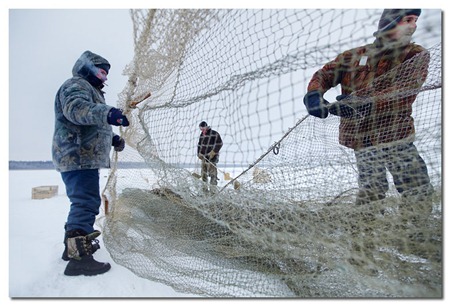 I’m in Abu Dhabi airport on a 12-hour layover. There’s really no better time to reflect on my most recent and final adventure in Belarus, before I head back to Sydney.
With a bit less than a week till my flight I decided that it’ll be a real pity not to visit the Braslav region one last time. When Yuri Ivanych, my friend in Braslav told me that I’d be able to see how the same fishermen brigade which I already photographed works in winter, I was sold on one last visit, much to the dismay of my family in Minsk, and Tanya – my wife.
I’m in Abu Dhabi airport on a 12-hour layover. There’s really no better time to reflect on my most recent and final adventure in Belarus, before I head back to Sydney.
With a bit less than a week till my flight I decided that it’ll be a real pity not to visit the Braslav region one last time. When Yuri Ivanych, my friend in Braslav told me that I’d be able to see how the same fishermen brigade which I already photographed works in winter, I was sold on one last visit, much to the dismay of my family in Minsk, and Tanya – my wife.
The main reason was their concern for my driving ability in winter time. After my small car crash in Poland I had a bigger accident the day before New Year’s Eve. Again - very slippery road, which looked deceitfully decent, I decided to overtake a very slow moving car, but even about 60km/per hour was enough to land my vehicle into a barrier, down a small hill and into a field. A tractor pulled me out and one of those “evacuator” vehicles got the car all the way back to Minsk, as it was not driveable. The story had a happy ending, since no one was hurt and everything was solvable, but understandably my family was concerned.
In any case, I hired a car again and went to Braslav. Luckily everything went very smoothly as far as driving this time, I think I learned my lessons.
Now to the fishermen. The shoot was a dream and a nightmare at the same time. I always wanted to shoot in the winter, in the snow. But that day it was minus 20 Celsius! I will say first of all that the gear held up incredibly well. I shot with the Canon 5D MKII, 20mm f1.8 Sigma and 24-70 f2.8 Canon lenses, I didn’t expect any problems with those, what surprised me was the battery. I filled a 16GB card with stills and even a few videos, the battery still had 28% of life left, I decided to change it simply to avoid missing an important shot when it would finally go flat.
I don’t know how I would rank my own performance. I was in the cold for about 5 hours straight and another two with breaks in a pretty warm car. It’s tough working in such weather. You can’t shoot without gloves, you lose sense of your fingers very quickly, the wind feels like it burns your face and when the sun goes down, staying for a couple of minutes without movement makes your teeth rattle from the cold.
I was not greatly equipped, as far as cold-proof gear for this one, but my friend was impressed with the way I tolerated the conditions. I have to say - it was a great experience, but I won’t be too sad if I don’t have another one like it for a while.
When the fishermen finally pulled out the net, which they managed to spread out under the ice, they didn’t end up with much. Parts of the ice cut the net in a few places and a lot of the fish was lost. Tough day for these guys, they were at the lake for much longer than me and managed to handle it like just another work-day.
At the end me, Yuri Ivanych and the National park driver drove across the frozen lake. In a very timely manner I was told that 10 years ago a jeep went under at about this time of the year, taking four passengers with it. I was advised to hold on to the door handle, to open it and jump, in case the ice cracks. I thought it was a joke, but after seeing Yuri Ivanych holding on to the door handle at the back I realised it wasn’t. The driver joked – if you two are holding on to the handles, what the hell am I meant to do? – Hold on to the wheel! Joked Yuri Ivanych.
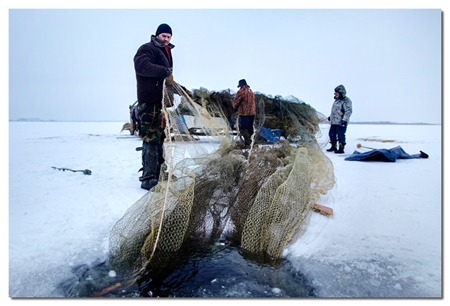 A large hole is made in the ice. On one end fishermen cast a net into the hole.
A large hole is made in the ice. On one end fishermen cast a net into the hole.
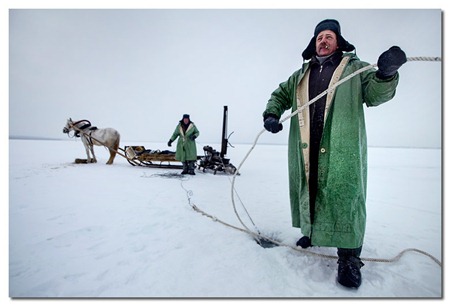 On the other end, fishermen make holes in the ice and use ropes to capture the net and spread it out. The net is pulled by hand at first and later with the help of a motor and a horse.
On the other end, fishermen make holes in the ice and use ropes to capture the net and spread it out. The net is pulled by hand at first and later with the help of a motor and a horse.
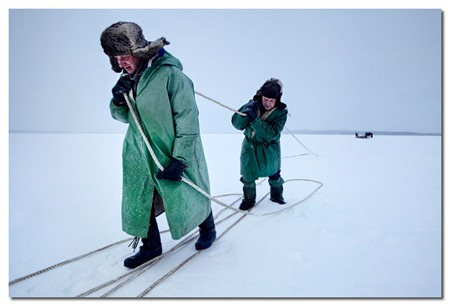 The working conditions are very manual labour intensive, but things weren’t actually this way before. I was told by the fishermen who have been in the “business” for a while that there was more machinery involved during the Soviet times. Tractors did the job of horses and humans. Now it is unclear where the resources are going, one thing for sure the job hasn’t become any easier.
The working conditions are very manual labour intensive, but things weren’t actually this way before. I was told by the fishermen who have been in the “business” for a while that there was more machinery involved during the Soviet times. Tractors did the job of horses and humans. Now it is unclear where the resources are going, one thing for sure the job hasn’t become any easier.
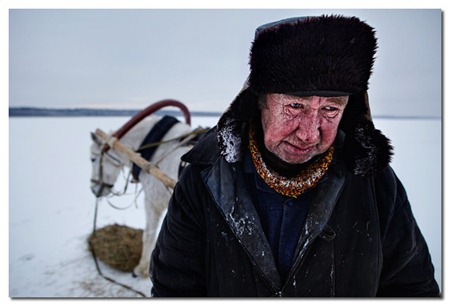 This man has been with the fishermen brigade for a very long time. When I asked him “How’s life?” after arriving, he replied - “Life? What kind of life is this? I’m so sick of this shit, I’ve been doing it for 36 years! It’s f—cking cold out here!” I asked him why he did the job. His reply- “What else is there to do?”
This man has been with the fishermen brigade for a very long time. When I asked him “How’s life?” after arriving, he replied - “Life? What kind of life is this? I’m so sick of this shit, I’ve been doing it for 36 years! It’s f—cking cold out here!” I asked him why he did the job. His reply- “What else is there to do?”
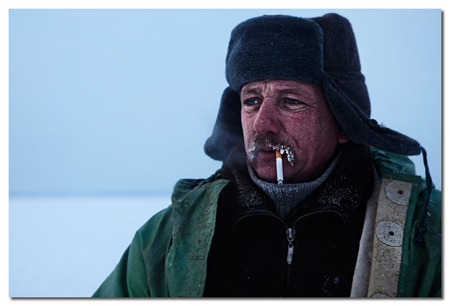 Not all fishermen lack enthusiasm though. The much younger Leonid, despite his frozen moustache tells me that the work isn’t so bad. He’s used to working because he has a big family and “many mouths to feed”. I asked him about the cold. “You don’t feel it while you work, while you move around, it’s not too bad here, if only someone could wipe the snot off my nose, then it would be perfect.” He jokes.
Not all fishermen lack enthusiasm though. The much younger Leonid, despite his frozen moustache tells me that the work isn’t so bad. He’s used to working because he has a big family and “many mouths to feed”. I asked him about the cold. “You don’t feel it while you work, while you move around, it’s not too bad here, if only someone could wipe the snot off my nose, then it would be perfect.” He jokes.
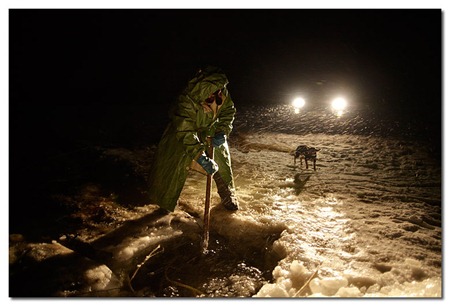 A fisherman puts a rope in the water then stirs it around with a stick to defrost it. His dog, watches on. She followed her owner and stayed by his side in the blistering cold for the entire day.
A fisherman puts a rope in the water then stirs it around with a stick to defrost it. His dog, watches on. She followed her owner and stayed by his side in the blistering cold for the entire day.
The only light comes from the car’s head-lights, however, usually there’s even less light than you see. The car’s lights were only switched-on after my begging, pleading and explaining that I won’t be able to photograph anything without them, at least that helped the fishermen a bit too. I've said it before, it's a tough life. Their salary is about 180,000 Belarussian Rubles per month, that’s a bit over US$60.
That's all for now. My next post will be from home, for the first time in about 5 months.
Summing up my trip and some ideas for the new year
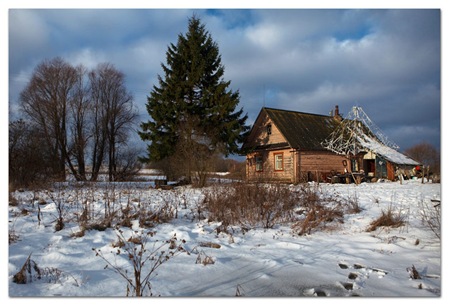 My Eastern Europe trip’s over. For the first time in a long while I am actually happy that a trip has ended. Perhaps it’s because I am still not completely home, but in Belarus, and in some way the journey is still continuing.
My Eastern Europe trip’s over. For the first time in a long while I am actually happy that a trip has ended. Perhaps it’s because I am still not completely home, but in Belarus, and in some way the journey is still continuing.
My incredible bad luck continued on the Poland to Belarus road. I had my first ever car crash of a sort when I went over a pile of snow, slightly lost control of the car and then totally lost control when I pushed the brakes (not the best idea to push the brakes). Luckily there was one of those barriers along the highway that separates lanes from each other, that’s what the car hit, first with the front bumper then after sliding and doing a 180° turn, with the back.
We weren’t going too fast and there was almost no traffic, so we ended up unscathed and didn’t collide with anyone else. The car looked…interesting, I regret not taking photos of it now, but Tanya and I were too busy gaffer-taping the front bumper on, in – 13 C weather.
We somehow made it over the border the next day. After seeing the gaffer-taped bumper, the Belarusian border patrol jokingly asked “Is that a bumper from a BMW or yours?”. The customs people felt so sorry for us they didn’t even bother going through the trunk (which doesn’t open anymore anyway).
The important thing is that we made it back in one piece. I guess there is the argument that we were really unlucky, because of all the things that happened along the way, but on the other hand no one even thought it was possible to go to Romania and back in our little 25-year-old Volkswagen Golf. Go figure.
After spending a few days in Minsk, one of my least favorite cities in the world, we decided to go visit some friends in another city. That’s when the car died again on us. I didn’t bother fixing it this time, simply got a hire-car and drove off to Braslav, the region I passionately spoke about numerous times on my blog.
Driving in winter, especially when there are sudden weather changes is a nightmare. From the icy roads to giant puddles, it’s tough and dangerous. I’d be happy to lie low for a few days and that’s exactly what I’m doing in a friend’s countryside house (that’s a picture of it at the top of the post and those are his “pets” below). Just me Tanya, nature and my computer. :) In reality I have a lot of work to catch up on and I hope that’s what I can do, while getting some peace and quiet that was missing during the constant movement around Eastern Europe.
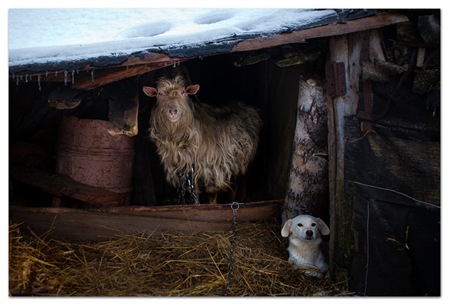
New year is approaching and I already have plenty of exciting plans. Coming back to Braslav in the summer is one idea. It is an amazing region and perhaps my journey around the rest of Eastern Europe made me realize just how special it is. In many ways it’s still virgin, unspoilt, a little wild even. To wander around the villages here is absolutely fascinating and often heartwarming and the natural beauty is unlike anywhere else.
I’m thinking that it may be worth doing a workshop in Braslav or perhaps even trying something new with the good friend I’ve made here (the one whose house I’m staying in) – a guided photo tour of a sort. It’ll be for those who are more comfortable with their photographic abilities and simply want to have an amazing photographic experience, rather than learn a standard workshop. If anyone thinks it’s a good idea, drop me a line or leave a comment on the blog.
Two personal trips which are close to happening:
Another trip to Indonesia and yet another trip to India. I want to buy underwater housing for my Canon 5D MKII and shoot stuff on fishermen in Indonesia. The last time there were just too many times when I was kicking myself for not having some sort of casing.
The India thing is well, India calls and when it calls you go. It seems to be calling me at least once a year, but hey, I still have only just scratched the surface of what can be done there. I’ve got a few particularly exciting things planned, but I won’t reveal too much just yet.
I like to make plans for the future, actually, it’s more like dreaming up things and then working to make them happen. It’s an amazing feeling when you realize that you are living a dream, but it all starts with nothing more than a thought, an idea. I think it’s important to have those plans/dreams, not only for photographers, but for anyone. Make those dreams achievable and then really work to realize them. It’s sort of what I’ve been doing, without having any particular idea of how to make things happen, I simply make them up, dream and somehow everything falls into place, the important thing is to set those goals for yourself. I guess the clichéd yet encouraging and true thing to say is that – if I made it happen, so can you. :)
So I guess before I end this blog post I’d like to ask; what are your photographic plans/dreams for the next year?
Happy new year folks! :)
Postcard from Slovenia and the trials and tribulations of life on the road.
I’ve been on the road in Eastern Europe for about a month and a half now and I’m kinda tired. Perhaps it’s the road, perhaps it’s the fact that there has been relatively little photography or maybe it’s the bad weather, which has contributed to the lack of photography.
Perhaps it’s the stupid decisions I’ve made before leaving – like taking a 25 year old car on a 5000 + km journey. In Asia transport trouble often led me to make new friends and gave me a glimpse into their worlds. Believe it or not, leaving yourself vulnerable in a difficult situation can really show you what a certain culture/people is like and that can make any transport trouble pretty bearable. In the places I’ve traveled in Asia there’s always a positive aspect that emerged, sometimes something as profound as the affirmation of the great potential of human kindness. When a stern looking desert man who speaks no word of English sees you’re in trouble, goes 10 km one way and back to bring some tools to fix your motorbike and then, after all that invites you for tea and chapattis with his family, insisting that you come back for lunch, well that makes any human being with emotions almost teary eyed.
My experiences in Eastern Europe (not including Belarus) have been pretty far from anything like that. They’ve mostly been all about paying, and paying lots. The mechanic doesn’t invite you for lunch either, and doesn’t introduce you to his family, which is obviously totally understandable, but it sure puts things into perspective. Why do people in India and Indonesia do that? Are they so much more hospitable and open to human interaction than Europeans? I guess in general, the answer is “yes” and I guess that’s why I love being there so much.
The sole exception of a sort happened in Maramures, Romania. My car’s exhaust pipe fell apart after I hit a pot-hole, there was no equipped garage nearby and the only mechanic was one with a very simple set-up. We couldn’t drive too far with the exhaust dragging on the ground and so we had to act on the spot. The mechanic had enough sympathy to understand that and came up with a solution. It was decided that everyone who was there – me, two guys I traveled with, the mechanic and his friend were gonna push the car on its’ side, so the exhaust pipe could be welded together. The four of us were slightly short of muscle power and a passing-by neighbor was asked to help. Without any hesitation he did.
We managed to sort everything out and I was back on the road, thanks to the resourcefulness of these villagers from Maramures. That was about as close as I’ve come to an Indian experience in Europe.
Why does any of this matter? It doesn’t really, if I don’t think about it, but as mentioned, I feel these situations help me put things into perspective, to appreciate the countless amazing moments that have filled my life while I’ve been traveling. They help me gain some sort of an understanding of this crazy world we live in and that in turn can’t be all that bad for my photography.
I don’t advise anyone to do what I’ve been doing – driving in a 25 year old car, I mean. But when I think about it, I got myself the best thing I could can afford at the time, the other option would be not to go at all. I’ve been my own guinea-pig, seeing how far I can go and what adventures and experiences will come my way. I did all the main things I wanted and I can’t complain about that.
Perhaps I’ve been spoilt by the kindness of the amazing strangers who have come my way in the past. Typing this in an overpriced hotel room and paying for a crappy internet connection somewhere on the Slovenian border in Italy, I’m thinking that perhaps it’s time to get back to “reality”.
Tomorrow I will see if my car is fixable. It was a little unnerving to see smoke come out from under the bonnet, you don’t need to be a mechanic to know that’s not the best sign.
My little adventure is almost over, I originally planned to return to Belarus around the middle of December, I still hope that I can drive back and not have to fly there. :)
The top image is from Bled, Slovenia – an unbelievably beautiful place. I was lucky enough to have a sunny day when I arrived, it was all rain and fog later. The next image is me with my car flipped on the side, while the exhaust pipe was getting welded.
The lonely Yosef Dorozhko
 About a week ago we met a wonderful man by the name of Yosef. I spotted him from my car while he was pushing his bicycle up a hill. Immediately I wanted to photograph him. I turned the car around, caught up to Yosef and asked him if I could take a few photos. He smiled and said to go ahead.
We spoke a bit, after learning that Yosef was 81 I was a little shocked. His bike journey wasn’t an easy one, even for a young person (there was lots of pedaling up hills to be done) and here he was carrying on very casually. I sorta invited myself over to his house and asked if I could take a few more photos there. He didn’t mind.
About a week ago we met a wonderful man by the name of Yosef. I spotted him from my car while he was pushing his bicycle up a hill. Immediately I wanted to photograph him. I turned the car around, caught up to Yosef and asked him if I could take a few photos. He smiled and said to go ahead.
We spoke a bit, after learning that Yosef was 81 I was a little shocked. His bike journey wasn’t an easy one, even for a young person (there was lots of pedaling up hills to be done) and here he was carrying on very casually. I sorta invited myself over to his house and asked if I could take a few more photos there. He didn’t mind.
And so began our friendship with Yosef. It turned out that his life had taken a very unfortunate turn of late. He lost his wife and both of his sons fairly recently. He also lost his apartment in the neighboring Latvia, because the cost of all the bills exceeded his meager pension. Yosef had to go back to Belarus, to live in the house where he was born 81 years ago. To make his story more sad, the house where he now lives is fairly isolated and ever since his parents built it, there has never been any electricity. Yosef makes light with Kerosene lamps and instead of watching TV, he reads, prays and talks to his cats.
The crazy thing is, he never really complains about anything. He doesn’t drink uncontrollably, like many younger and much more fortunate people in the neighboring villages. He just goes on about his life the best he can, still managing to crack an occasional smile along the way. Yosef inspired me by his resilience and it seems like our visits to his home have given him a reason to crack that smile more frequently. Tanya and I have gone to talk to the authorities and hopefully he will have electricity some time in the not too distant future.
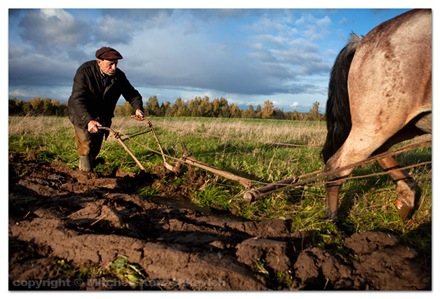 Yosef has a horse. It was time for him to work on the land during one of our visits and of course that presented a great photo opportunity.
Yosef has a horse. It was time for him to work on the land during one of our visits and of course that presented a great photo opportunity.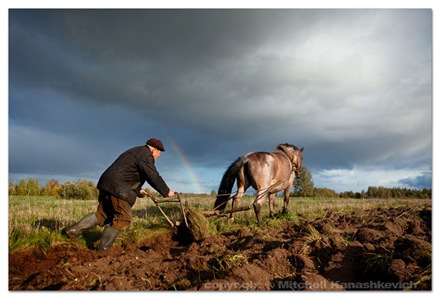 I got pretty lucky during my little photo-shoot. It had been raining most of the day, but soon after I arrived at Yosef’s house there was an opening in the sky. I got some good light and even a rainbow.
I got pretty lucky during my little photo-shoot. It had been raining most of the day, but soon after I arrived at Yosef’s house there was an opening in the sky. I got some good light and even a rainbow.
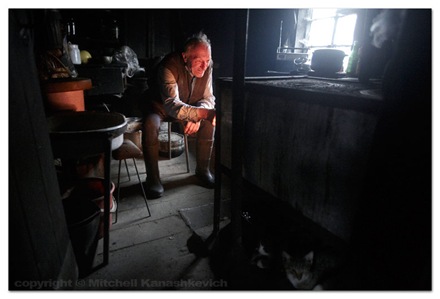 Yosef adjusts fire-wood in the oven which he himself made. He was heating up a kettle to make tea for us.
Yosef adjusts fire-wood in the oven which he himself made. He was heating up a kettle to make tea for us.
Tea time. Yosef sets up the tea glasses and the food for his guests.
Meeting people like Yosef again reminds me of how lucky I am to be doing what I do. These countless chances to meet inspirational people are something I enjoy immensely and when there is an opportunity to have a positive impact on the life of someone like Yosef, that’s sort of like the essence of being human.
More images to come.
The Gypsies of Vidzy
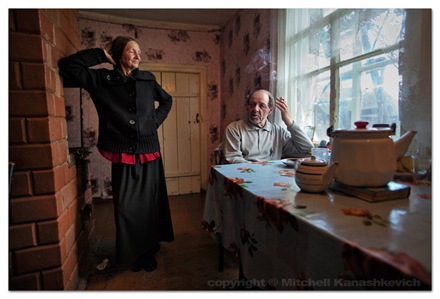 The other day was yet another reminder of why I love what I do so much.
I can be pretty cynical, but in general I’d day that I am very optimistic and positive. I like to see the best in people until I am proven the opposite. I don’t see the point in stereotyping and prejudging entire nations, tribes or any groups of people for that matter. What have we got to gain from that?
The other day was yet another reminder of why I love what I do so much.
I can be pretty cynical, but in general I’d day that I am very optimistic and positive. I like to see the best in people until I am proven the opposite. I don’t see the point in stereotyping and prejudging entire nations, tribes or any groups of people for that matter. What have we got to gain from that?
In any case, it’s no secret that gypsies have quite a reputation around Europe, not necessarily the most positive one by any stretch of the imagination. Belarus is no exception. When I visited the village of Vidzy, one of the more fascinating places in the Braslav region (because of its’ multicultural population) I was given mixed impressions about the gypsies living there. Some folks said that all’s good, everyone lives peacefully and the gypsies are decent people. Others told me not to visit them with all that photographic equipment, because one way or another I’d “loose” it. One young man even told me not to visit them at all because I could be greeted with a punch in the face.
Nothing could be further from the last piece of advice. In fact after visiting three gypsy houses, I found them to be the most hospitable people I’ve met in Belarus yet. If there’s any truth to the theory that gypsies came from India, it was manifested through the instant invitations of the guests (us) for tea. I know that tea probably wasn’t around in India when (or if the gypsies) came out of that region, but still, the hospitality was all too familiar. When we met the local gypsy leader, the “Baron”, as they used to be called, he even offered us lunch, which isn’t so usual these days, at least it’s not offered to total strangers, not even by the very kind village people of the Braslav region.
To be honest I didn’t think anything negative of the gypsies in Vidzy even before I met them, but I also didn’t expect such level of hospitality and their eagerness to share whatever they had left of their culture. We spent about 4 hours just chatting to families and shooting a few frames along the way. The whole trip was another proof of why preconceptions should be left at home when we deal with real people, this is especially important if you’re a photographer.
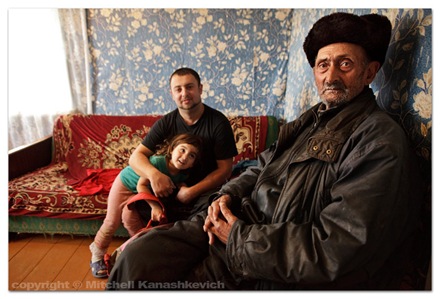 The gypsy elder; 78-year-old Ivan Yanovich, his grandson Jan and his great-grand niece Xenia. Xenia was very playful and I wanted to show that through her pose/movement in the images, she just couldn’t stay still.
The gypsy elder; 78-year-old Ivan Yanovich, his grandson Jan and his great-grand niece Xenia. Xenia was very playful and I wanted to show that through her pose/movement in the images, she just couldn’t stay still.
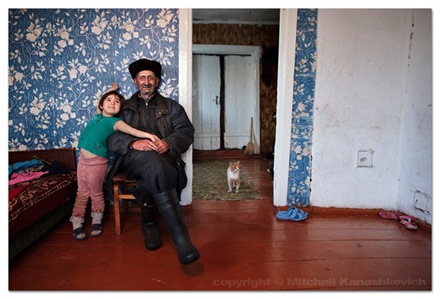 I couldn’t resist shooting a few more frames when the cat came into the middle of the doorway. Again Xenia is squirming and wiggling.
I couldn’t resist shooting a few more frames when the cat came into the middle of the doorway. Again Xenia is squirming and wiggling.
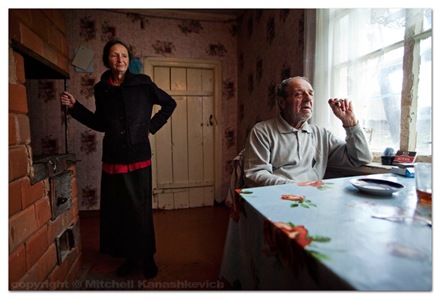 Another variation of the image from the top of the page. Because my wife Tanya and our local friend Anna were doing a lot of the talking with Filip and Vera (pictured) I had the luxury of just watching things like a fly on the wall and photographing whenever I saw a good shot.
Another variation of the image from the top of the page. Because my wife Tanya and our local friend Anna were doing a lot of the talking with Filip and Vera (pictured) I had the luxury of just watching things like a fly on the wall and photographing whenever I saw a good shot.
That’s all for now folks. More images coming soon along with some stories.
Braslavschina - The most amazing place you’ve never heard of
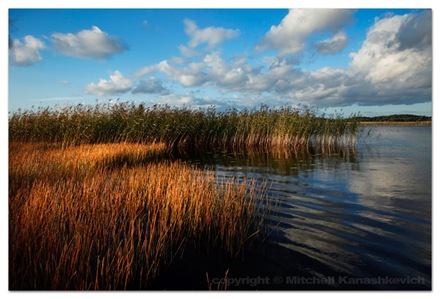 I have just returned from Braslavschina – the region around the town of Braslav and as I mentioned in my last post, all of my expectations have been surpassed. There are plenty of old, traditional villages, wonderful, photogenic people and there are over 400 lakes – almost all of them ridiculously picturesque.
I have just returned from Braslavschina – the region around the town of Braslav and as I mentioned in my last post, all of my expectations have been surpassed. There are plenty of old, traditional villages, wonderful, photogenic people and there are over 400 lakes – almost all of them ridiculously picturesque.
Perhaps it’s some sub-conscious thing about this region being a part of my “motherland”, but Braslavschina has quickly become one of my favorite places in the world. All I need to be happy is – something to photograph, some place to swim and some nice people to chat to. :) I can find all of that here, plus the kind of nature, which I only thought existed in fairy tales.
Ok, so I’ve fallen in love with this place, I really mean it. I’ve even enquired about prices of land and simple houses here and I have found out that they are ridiculously cheap, at least by Western standards. If I find something suitable, I’ll soon have my own tiny piece of paradise, perhaps even one right on a lake.
Anyway, enough dreaming. Here’s a brief look at what I’ve seen so far. I’m in Minsk for a few days to sort out some paperwork on my newly bought ‘84 Volskwagen Golf II. It ain’t pretty, but it’s cheap, it’ll take me where I want and it’s mine. I’ll be coming back to Braslavschina as soon as I can. I’ve only scratched the surface, as far as photography goes.
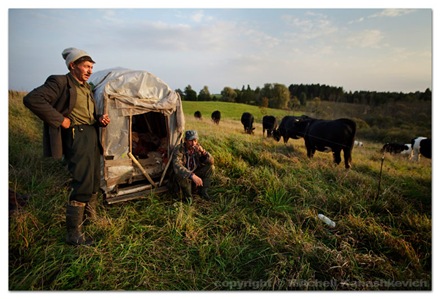 Tolik and Vatsik – two cow herders taking a break. It seems like I’ve got this strange attraction to cattle herders and fishermen, wherever I go. More on fishermen in the near future.
Tolik and Vatsik – two cow herders taking a break. It seems like I’ve got this strange attraction to cattle herders and fishermen, wherever I go. More on fishermen in the near future.
 Tolik herding cows with a whip.
Tolik herding cows with a whip.
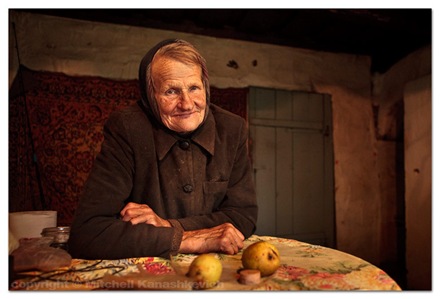 Above and below are images of kind elderly ladies from two different villages with the same story. In the really traditional villages there isn’t much youth these days and the old are the living, walking, breathing embodiment of the incredible history of this area.
Above and below are images of kind elderly ladies from two different villages with the same story. In the really traditional villages there isn’t much youth these days and the old are the living, walking, breathing embodiment of the incredible history of this area.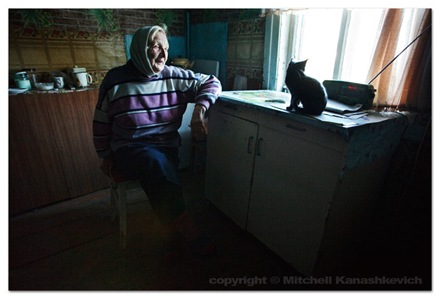
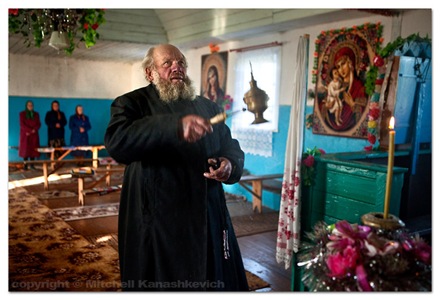 A prayer inside a church of the “Old Russian Orthodox” faith. It’s very similar to the “standard” Russian Orthodox religion, but all the prayer’s are written in ancient Russian and read accordingly. Only two people in this village can read them – this “Father” is one of them. The “Old Russian Orthodox” faith is almost extinct in Belarus. The three ladies in the background are basically the only attendees.
A prayer inside a church of the “Old Russian Orthodox” faith. It’s very similar to the “standard” Russian Orthodox religion, but all the prayer’s are written in ancient Russian and read accordingly. Only two people in this village can read them – this “Father” is one of them. The “Old Russian Orthodox” faith is almost extinct in Belarus. The three ladies in the background are basically the only attendees.
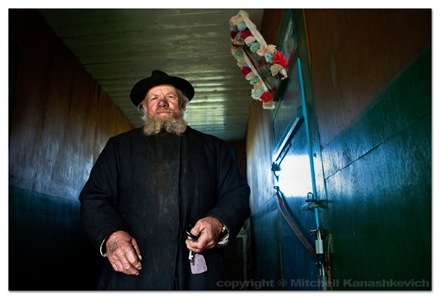 Father Akim (a very unusual name for Belarus) on his way out of the church.
Father Akim (a very unusual name for Belarus) on his way out of the church.
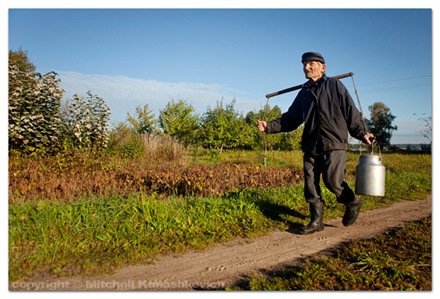 Every morning this man waits by the side of the road to sell is milk to large government-run co-operatives. Here he is returning home after selling the milk.
Every morning this man waits by the side of the road to sell is milk to large government-run co-operatives. Here he is returning home after selling the milk.
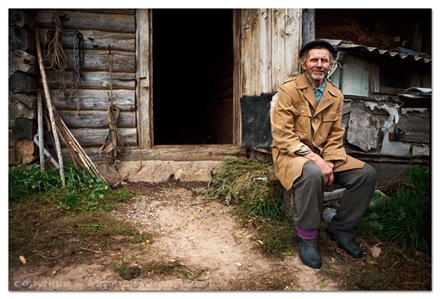 Grandpa Alexei was very shy about being photographed. When it comes to photos initial shyness is a common reaction amongst most of the older people. They’ll usually say something along these lines – “Why would you want to photograph me? I’m not shaven” or “I haven’t even got my teeth”. To me however these faces are amazing, they say so much without the need for words. After a short chat and me explaining what I do everyone usually agrees to have their picture taken.
Grandpa Alexei was very shy about being photographed. When it comes to photos initial shyness is a common reaction amongst most of the older people. They’ll usually say something along these lines – “Why would you want to photograph me? I’m not shaven” or “I haven’t even got my teeth”. To me however these faces are amazing, they say so much without the need for words. After a short chat and me explaining what I do everyone usually agrees to have their picture taken.
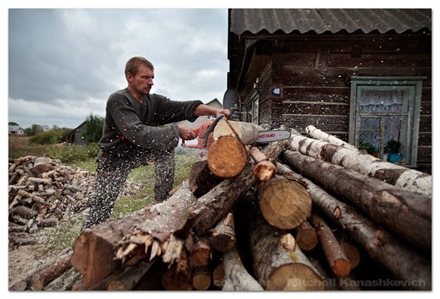 The modern way of preparing firewood – with a chainsaw. The man – Vasily is one the few younger men choosing to live his life in the countryside. He does however work outside of his village, on construction sites in cities as large and as far as Moscow.
The modern way of preparing firewood – with a chainsaw. The man – Vasily is one the few younger men choosing to live his life in the countryside. He does however work outside of his village, on construction sites in cities as large and as far as Moscow.
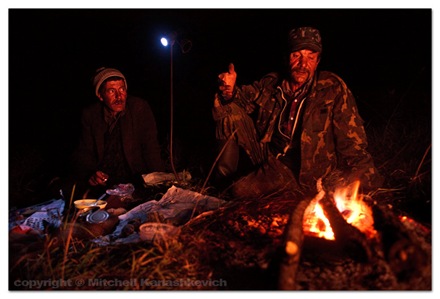 Back to the cow herders – Tolik and Vatsik having their dinner by the fire. I won’t mention what they were drinking.
Back to the cow herders – Tolik and Vatsik having their dinner by the fire. I won’t mention what they were drinking.
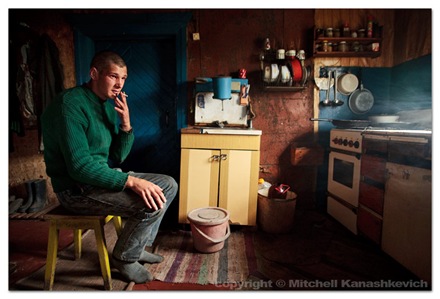 Vova is another rare find, he is the only young man in his village. The rest have moved out and now live and work in Belarus’ larger cities. Photographically speaking this is the sort of portrait I am enjoying shooting more and more these days - a shot where the person is surrounded by objects that tell you something about his her life/culture.
Vova is another rare find, he is the only young man in his village. The rest have moved out and now live and work in Belarus’ larger cities. Photographically speaking this is the sort of portrait I am enjoying shooting more and more these days - a shot where the person is surrounded by objects that tell you something about his her life/culture.
Ok, that’s all for now. Needless to say, I can’t wait to go back and shoot some more stuff. I have also filmed some interviews and some scenes that are best communicated through “moving pictures”, but unfortunately my ancient laptop isn’t powerful enough to edit HD video. Well, I guess that’ll all have to wait.
Into the Light: Amateur Photographer Magazine
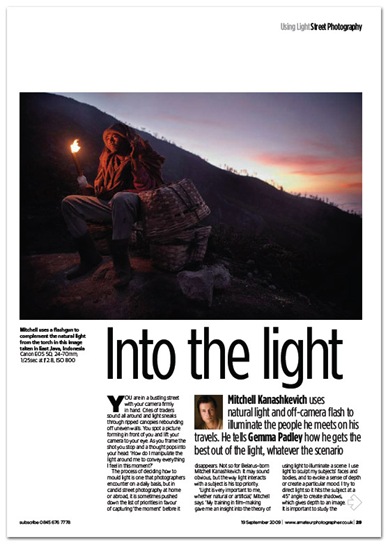 This month there is a 6 page feature on my work in the “Amateur Photographer” - possibly the longest running photographic publication in the world. The article is called “Into the light” (as you can see above), fitting, considering the recent release of my eBook.
This month there is a 6 page feature on my work in the “Amateur Photographer” - possibly the longest running photographic publication in the world. The article is called “Into the light” (as you can see above), fitting, considering the recent release of my eBook.
I’m excited about this one. The interviewer was great and really tried to get to the essence of what I do from a practical perspective. As a result the feature is a “to-the-point” look at my photography and at how I shoot. I hope they send me a copy, it’s still kinda exciting to see my work in print. The magazine (weekly publication) is available in the UK and Australia, and perhaps in other English speaking countries.
My website was finally included and there’s even a very quick plug for my eBooks. If you’re a reader of my blog you’ll know that I’ve had a few frustrating experiences with people forgetting to include my website into the magazines, so I’m real glad about everything working out just as I had hoped.
Speaking of the eBooks, I want to thank everyone who bought them over the past couple of weeks and a special thanks to everyone who spread the word about them. The response was even better than the first time. The income will give me the freedom to move around and shoot the subjects that interest me, and that’s all a photographer can ask for.
Right now my wife and I are at her sister’s apartment in Northern Belarus. We’ve stopped here on the way to Braslav – an area which is supposed to have some fascinating traditional (relatively) villages. I’m really glad to get away from Minsk! It takes only a couple of weeks of being in the city to remember why it felt depressing, even when I was a 10-year-old. The overwhelming, oppressing communist architecture and city planning might be fascinating over a short visit, but not if you have to live amongst all that crap. It feels like everything was planned to make the individual feel insignificant. You walk for hundreds of meters from one shop to the next, the streets are wide enough to fit a football field, but at the same time, the apartments in which people live are tiny and stacked on top of each other over 9 stories and more. In short I have no love for Minsk.
On the way to Novopolotsk (where Tanya’s sister lives) I saw the romantic, beautiful side of Belarus – green meadows, stacks of hay, forests and villages. This is what I came here for and this is what I finally have a chance to shoot.
Well, that’s all for now. Tomorrow I’m off to Braslav, I pray to the “photography Gods” to give me what I seek.
“Seeing the Light”: Making the most of available light and minimal equipment – the eBook
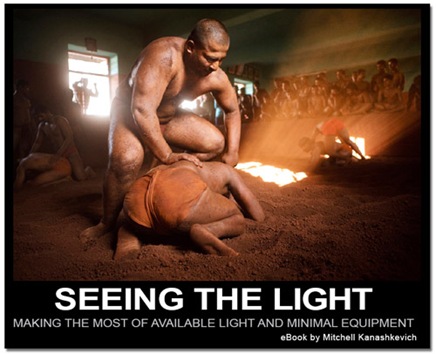 At long last here it is, my new eBook on working with light! I think the title is pretty self-explanatory. You can see some sample screen grabs below and HERE you can download the sample PDF (845kb).
At long last here it is, my new eBook on working with light! I think the title is pretty self-explanatory. You can see some sample screen grabs below and HERE you can download the sample PDF (845kb).
You can buy it HERE or click on the title image. The price is again US$12. After payment you’ll be automatically taken to the download link.
I wanted this eBook to be useful for photographers of different levels, from those who have just begun to understand how critical light is to photography, to the more experienced individuals ready to dive into the world of artificial lighting and try new things.
The information inside should be relevant to anyone who’s passionate about light, but wants to stay compact – that includes travel and documentary photographers, wedding photographers, portrait photographers and even low-budget commercial shooters.
In short here’s what the readers will learn after going through the eBook:
- How to create “believable” looking artificial light with a single off camera flash in a softbox or with a reflector
- How to get the most out of available light – with and without the help of artificial light
- Gain a deeper understanding of natural light and how it can be used creatively, even in challenging situations
- How to “sculpt” with artificial and natural light
- How to light scenes with a flash without killing the existing atmospheric light
All you need to purchase the eBook is HERE.
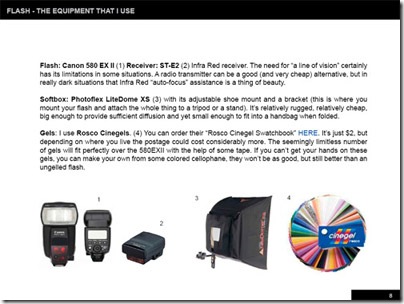 List and explanations of my equipment
List and explanations of my equipment
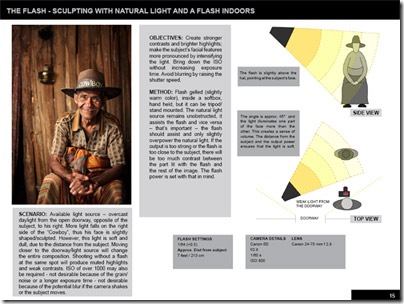 Breaking down images with descriptions and diagrams
Breaking down images with descriptions and diagrams
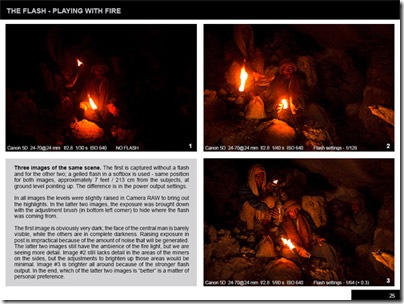 Comparison - Images taken with a flash and without
Comparison - Images taken with a flash and without
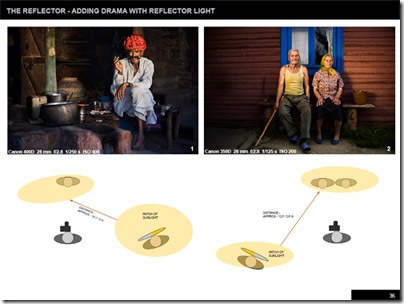 Diagrams for working with the reflector
Diagrams for working with the reflector
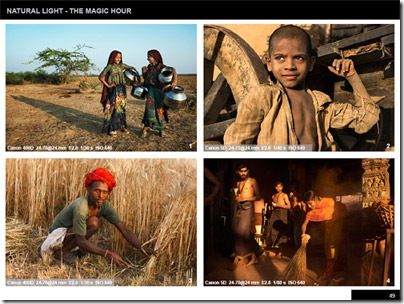 Sample images taken under natural light with complete Exif data
Sample images taken under natural light with complete Exif data
If you like the e-book or know photographers who may find it useful – please spread the word. As with the previous eBook all the income from this will be used for good :) – i.e. photography and more travel, which will also result in more photography and more viewing pleasure for the readers of this blog. :)
Use the bar below to spread the word.
Reflecting on our photography and looking at the “bigger picture”.
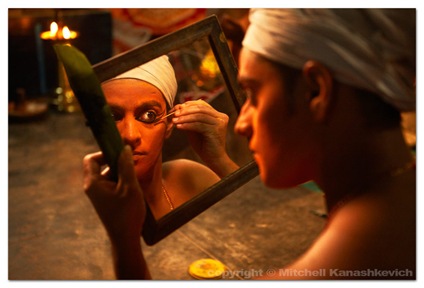 As I sit and type this blog entry in the lounge room of my wife’s parents’ apartment and wait for the “higher powers” (not supernatural ones, just ones with connections) to tell me when I can go out and photograph what I want, I realize – I haven’t shot anything meaningful since I left India. That was in March!
As I sit and type this blog entry in the lounge room of my wife’s parents’ apartment and wait for the “higher powers” (not supernatural ones, just ones with connections) to tell me when I can go out and photograph what I want, I realize – I haven’t shot anything meaningful since I left India. That was in March!
I’ve had an unusually long break. When I travel, which is most of the year – it’s intense photography virtually every day, but for the past six months I’ve barely lifted my camera. While I’d like to photograph non-stop, all year-round, I have come to appreciate my time away from shooting. I try to utilize this time in the best way possible. For me that means marketing my work, sorting through thousands of photos to find ones which I will submit to contests, magazines and to Getty Images. This is also the time to learn more about photography, to read blogs and to look at other people’s work.
By doing things photography related, without actually shooting I’m able to distance myself from my own work a little, and by looking at all the other photography out there, I’m able to see where my images fit in the larger scheme of things, to see what role if any my photos play in the world so saturated with imagery. The time away from shooting allows me develop a self-awareness that helps one grow and evolve as a photographer or artist.
I really like what Alexei Brotdotovich, one of the first photography theorists said in regards to evolving as a photographer. I don’t remember the quote exactly, but it was something along these lines:
“Once you develop a style and become known for a particular kind of work – turn in the other direction, stop being formulaic and re-invent yourself”.
The phrase is very idealistic and conflicts with commercially motivated things like branding and the importance of developing a particular style that sets you apart from others, but there’s wisdom here. Personally, I wouldn’t go so far as to turn in a completely different direction, but I do try to change the way I shoot and the way I approach photography every now and then, sometimes fairly dramatically.
My hope is that people will still find a common thread throughout my work, but I don’t want my photography to be consistently predictable, I don’t want the viewers to be able to pin down my images to some formula. A sort of semi-self-re-invention may even go down well with clients or editors. While they may not be pleased by a a completely off-the-wall new body of work, an element of surprise within limits might be very welcome.
An interesting “re-invention” quote that comes to mind is from one of my favorite filmmakers – Wong Kar Wai, whose visually distinct work has gained him a huge following over the years and started new industry trends. In one interview a couple of years back Wong said – “Too many people are making Wong Kar Wai films these days, I’ve got to make different kinds of films now”.
Here’s a real example of an artist who’s reached a great level of success and fame, but is thinking of changing the formula that has made him what he is. That’s inspirational. In this case the artist is not bound by his work, he is a master and not the slave of his own creations, because he isn’t afraid of creating something new and different. Sure there’s a risk and the possibility of failure, but there’s always the chance that something amazing and genius will evolve from the new approach and to me that is much more exciting than repeating the same known formula time and time again.
Hopefully, in about a week, everything will be sorted out, as far as my plans to go out into the countryside and photograph in villages. In the meantime I might just put my own thoughts into action and shoot some stuff I usually wouldn’t, right here in the city. One thing for sure - all this time off is making my head swell with ideas!
Check this blog tomorrow, if everything goes as planned, the new eBook on light will finally be released.
Chiaroscuro – Sculpting with light
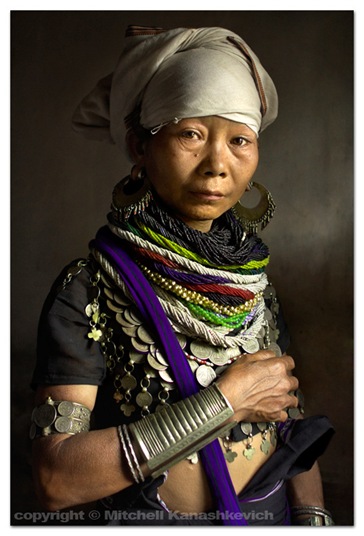 Since I’ve been pretty much consumed by all things light related recently, writing texts for my new e-book, I decided to write a post in the spirit of, you guessed it - light.
When I’m shooting, particularly when shooting portraits I have an obsession with creating a sense of volume and depth, making my photographic subjects appear sculpted, three dimensional. Turns out there has been a word for this “look”, since long before photography. The word is - “chiaroscuro”.
Since I’ve been pretty much consumed by all things light related recently, writing texts for my new e-book, I decided to write a post in the spirit of, you guessed it - light.
When I’m shooting, particularly when shooting portraits I have an obsession with creating a sense of volume and depth, making my photographic subjects appear sculpted, three dimensional. Turns out there has been a word for this “look”, since long before photography. The word is - “chiaroscuro”.
Now, call me an idiot, or a bad student, since I’m sure we learned this in my art history class at university, but when I heard the word from a traveling artist I befriended in Indonesia, I didn’t really know what he was on about.
Of course I put on a smart, understanding face, the first time I heard it, :) but after he used the word a second time, remarking how much he loved the presence of “chiaroscuro” in my work, (which I was showing him) I could pretend no longer :) - “chiaro-what?” He gave me a definition along the lines of what I later found later on Wikipedia:
“Chiaroscuro (Italian for light-dark) is a term in art for a contrast between light and dark. The term is usually applied to bold contrasts affecting a whole composition, but is also more technically used by artists and art historians for the use of effects representing contrasts of light, not necessarily strong, to achieve a sense of volume in modeling three-dimensional objects such as the human body.”
Today, as I was looking at some of my images, trying to explain the natural light in them and to break down into diagrams how it can be managed, I remembered the word and decided to Google it.
Caravaggio and Rembrant are two famous artists known for their mastery of “chiaroscuro”. I’m not making a revelation when I say that they’re masters for a reason. One thing is for a photographer to see the light and to position the subject in a way that will create the “chiaroscuro” look and another is to actually paint it. Every little detail is noticed and needless to say, the work of these artists is inspirational, even a few hundred years after its creation.
One important thing to note is that the masters were able to create compelling images without any of the amazing technology we have today (lighting or photographic). Many still do this there’s something to be said there. We don’t need fancy light set ups, artists have sculpted with light for hundreds of years. The first step for us as photographers is to see the light that is before us and understand how to work with it. There’s no sense in rejecting the creative opportunities that artificial light brings – that would be “counter evolutionary”, but there’s also no reason to ignore the power of natural light.
My stance is all for making the most of available light, in the literal sense of the word – any and all light available to the photographer on the move, that’s what I really want to explore in the e-book.
On a side note: I wander if any of the painters rave on about their gear or debate about which paint or brush is better, as photographers often do?
A blast from the past.
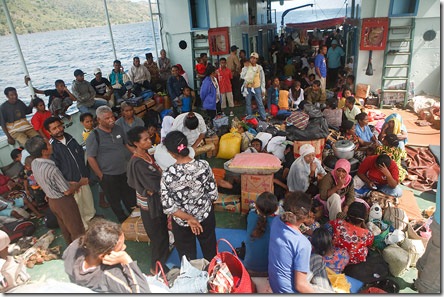 Well, again it’s been much too long since my last post. I’ve been busy – yes. But I did have a few ideas that I wanted to share here. Unfortunately my ideas for posts often take very long to cook up and when they do, they sometimes start morphing into something completely different.
Well, again it’s been much too long since my last post. I’ve been busy – yes. But I did have a few ideas that I wanted to share here. Unfortunately my ideas for posts often take very long to cook up and when they do, they sometimes start morphing into something completely different.
I have many things on my plate at the moment. There are several things I’m working on at once - one of them is another e-book. This one is going to be on lighting for travel photographers and those on the move. It’ll cover the use of off camera flash, reflector and of course natural light. The e-book will be similar format to “Understanding Post Processing” in that I will break down how certain images of mine were created. But there will be more examples, diagrams/illustrations of light set ups and lots of explanations. I’m pretty excited about it, but more on that in the coming days (or weeks).
The post from the beginning of the month “Some words to aspiring travel photographers” seems to have struck a chord with many and as I was sorting through some images from Indonesia, I came across photos from that ferry I mentioned. The one packed with goats, chickens, furniture, dry fish and lovely fellow passengers who chain-smoke and continuously spit on the floor.
And so, rather than bore you with a half-thought-out blog post, I leave you with images taken on the morning of our 16 hour, overnight ferry ride from an island called Lembata to one called Alor. The photo at the top of the page is obviously of the fellow passengers who didn’t impress me much with their smoking and spitting. I guess the image doesn’t do them “justice”.
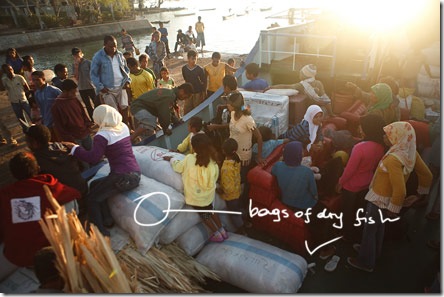
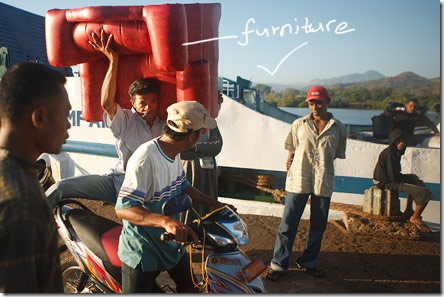
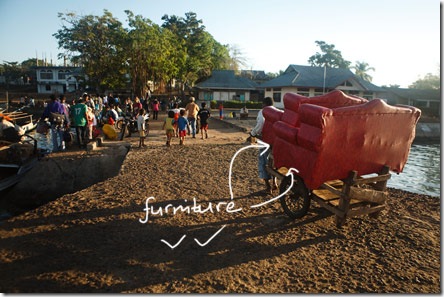
Some words to aspiring travel photographers
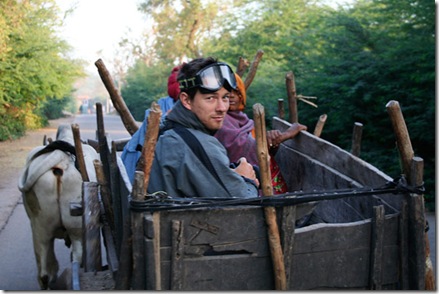 It may be borderline pretentious of me to be offering words to “aspiring” travel photographers, since until pretty recently I was only “aspiring” to do this thing myself. The reason for the post is a question, which I have received numerous times over the past couple of weeks, in various forms:
It may be borderline pretentious of me to be offering words to “aspiring” travel photographers, since until pretty recently I was only “aspiring” to do this thing myself. The reason for the post is a question, which I have received numerous times over the past couple of weeks, in various forms:
How does one become a travel photographer and go on to make enough money in this profession?
At first the question makes me laugh. Who the hell am I to be giving people advice on anything career-related? I’ve never had much of a plan and I always considered that a lot of my success was a result of pure luck. Regardless of whether I’ve changed from an “aspiring travel photographer” to whatever else, I have realized that I am now doing something that many dream of - I travel, take photos and mange to “survive” off the income generated by these photos. On second look I think that there may be reason to my “madness” and perhaps my own story can be useful to other young people starting out. Here it goes. :)
To “become a travel photographer” I worked all sorts of shitty jobs, occasionally committed intellectual and creative suicide by shooting what I consider trash, I used every opportunity in sight to get on the road. There’s an interesting concept I heard somewhere on the net (probably Brooks Jensen’s podcast) - you need to dedicate 10,000 hours to something in order to become proficient at it. Sounds like a fair assumption. That’s basically what I did without realizing. I never quite thought of it as a 10,000 hour thing, but I did know that to be decent at shooting particular themes I needed to shoot them for an extended period of time and so I totally immersed myself in doing just that, while I went off on trips that ranged from six weeks to seven months.
After my third India/Nepal trip (the seven month one) I felt that I really had an idea of what I was doing and incidentally that’s when other things started to click. I began to get published in magazines, had an exhibition and made print sales (more though magazines then from the exhibition). As much as everyone today says that print media is on its last legs, I’ll say that it’s pretty important to get your work published. There’s just a certain type of validity that comes with having your work in print. It means that someone at least thought enough of it to spend their money on the required paper and ink.
With the publications, I saw that my work had some value and I asked myself this question: How can I generate a more regular income from my photos? I looked at image/stock agencies. Got a contract with Lonely Planet Images (on my second attempt), but terminated it before long – this isn’t the place to go into the details, Lonely Planet make great guidebooks… and let’s leave it at that. :)
I still wanted to have my photos represented by an agency, those who are seriously working with the big name agencies know how important they can be and so, I went on a search. A bit of luck, weeks of waiting, empty phone calls and emails, weeks more of being bounced around and I finally managed to get in with Getty Images – everyone’s “favorite” stock selling (not so gentle) giant. :)
This brings me to How do you make enough money? part of the question. Well, it all depends on what you want enough for. A comfy life in inner-city Sydney? There’s a very slim chance that your travel photography will generate enough income for that in the first years. But having your images make you enough to travel and live around the cheaper parts of the world? Very possible, that’s what I do. :)
After a couple of years of very intense photographing and relatively recent, almost equally intense attempts at finding ways to make money from it, I have to say that I’m still very very far from striking it rich. Every month Getty sells some of my work and probably makes me enough to get by in most of Asia. I am still submitting to magazines and looking for alternative incomes from my photos, I’m even still willing to sell my soul, to shoot what I don’t love every now and then. However, importantly I no longer have to do what I don’t like, my images are finally “working” for me. Even more importantly I don’t have to work in retail, restaurants or wherever else just to save enough for the next journey.
But still, in all honesty, the way that me and Tanya (my wife) live is not for everyone. Certain comforts must be forgotten, while you’re on the road with a limited income, you simply can’t afford them.
Of course much of the beautiful, amazing things associated with travel are completely free, but if you ever compare your experiences with those of a friend, who may have traveled the same route as you during his four-week annual holiday, you realize that the pleasure you get out of traveling is very different to his. Your pleasure has a perverted twist. While he enjoys sipping cocktails on a luxury boat-cruise, you jump on a ferry packed with goats, chickens, furniture and dry fish, with lovely fellow passengers who chain-smoke and continuously spit on the floor. The journey exhausts and frustrates, and by the end you reek of that damn dry fish and your own sweat. But you’ve made new friends, learned words in a foreign language and have one heck of a story to tell when you get home. The pleasure comes from the experience and from the fact that you survived it. Your friend didn’t “suffer” on the luxury boat, but nor did he experience the ‘realness’ of actually being in another country, among regular people from a different culture.
If your cup of tea is the ferry ride and you’re really into your photography, then perhaps things don’t need to be very complicated.
I’ll borrow words from Chase Jarvis. He’s not a travel photographer, but unlike me, he really knows what he’s talking about. :)
There are two things you need to succeed: to be undeniably awesome at what you do, and to persevere.
Applies to everything, even travel photography.
(The confused character with ski-goggles above is none other than me. :) I used to wear the ski-goggles when riding the motorcycle. In this image I’m riding in the back of a bullock cart during an early morning in Rajasthan’s, Bundi District. Didn’t get a good picture, but the ride was kinda interesting.
Social Media Madness!
 First of all, I want to thank all the people who bought my ebook tutorial over the past few days and thank you everyone who spread the word about it. While I am not ready to head off on a cruise to the Caribbean just yet :) the great response has certainly made the time I put into this little project worthwhile, heck I may even make another one on a different topic in the future. For those who haven’t yet got it, it will always be available through my WEBSITE and this blog (side-bar on the right).
First of all, I want to thank all the people who bought my ebook tutorial over the past few days and thank you everyone who spread the word about it. While I am not ready to head off on a cruise to the Caribbean just yet :) the great response has certainly made the time I put into this little project worthwhile, heck I may even make another one on a different topic in the future. For those who haven’t yet got it, it will always be available through my WEBSITE and this blog (side-bar on the right).
I want to thank one person in particular – David duChemin / Pixelated Image. I met David a few years back on the ‘Travel Photographers Network’, since then we’ve corresponded over the internet and while I have never met him in person, I feel like I can really call him a friend.
If you’ve never heard of this duChemin fellow, well then I really can’t imagine where you’ve been. Over the past few months David duChemin has become one of the hottest names in photography. It seems as if on any given day he could be giving an interview on a popular photography podcast, meeting up with top photographers like Chase Jarvis or Joe McNally, or launching his BOOK at B&H, New York (probably the largest photography store in the world). The fact that amidst this busy schedule David managed to find the time to spread the word about that little ebook of mine just shows what sort of person he is. The dude is about as genuine, friendly and helpful as they get. Add those qualities to his success and you have one of the most inspirational photographers out there. So, thanks a lot David mate :) – for helping out and for being a continuous source of inspiration for God knows how many photographers now.
Now to the social media business, well it was also David duChemin who gave me the final kick up the butt to start ‘twittering’, ‘tweeting’ whatever the heck you call it. It’s not like I wasn’t aware of Twitter, I was, just as I’m also aware that it’s become much less cool, since all the ‘stars’ started using it.
I couldn’t care less about the ‘coolness’ factor. What I do see is that Twitter has turned into a really valuable tool for businesses and I can certainly see the incredible potential in it from a photographer’s perspective. David wrote a great blog post about social media stuff and photographers a while ago - “You 2.0 - Photographers and Twitter” and if you want to delve deeper into what the whole Web 2.0 thing can do for photographers it’s worth checking out Jack Holligsworth’s Site. From what Jack is promising, it will be a valuable source of information.
As far as my opinion – in short, I think Twitter is very useful for photographers marketing their work and services. It can also be an important tool, along with a blog when it comes to building your brand. But even if you aren’t into brand-building or marketing your photography, you can get a lot out of Twitter. If you ‘follow’ the right people, Twitter can be a tremendous source for learning things you never even knew were extremely useful for you – latest tech news, industry trends, free resources on the internet. If something has value, there’s a good chance that you’ll come across it on Twitter.
So yeah, I’m on it now, as some may have noticed from the ‘My Twitter’ update thingy on the side bar. You can all FOLLOW me if you like, I’m ‘mitchellkphotos’. I promise that I won’t tweet whenever I take a crap or eat something, only useful information for photographers, travelers or simply like minded folks.
Now to a somewhat different topic. As if I didn’t lust for the 5D Mk II enough already, not long ago I discovered this blog – Planet 5D.
Look around for 5 minutes and you’ll come across some amazing videos created with the camera. Some of you may be photography purists and don’t want to even touch that video button, but me, well I started off making films, so this bloody camera is making me drool. The price-tag, which is still a little ridiculous in Australia and the fact that for the same amount of money I can probably live and travel in Asia for half a year have prevented me from getting one, but man, could I do some great things with that video function :).
If anyone important from Canon ever reads this – please send me a free 5D Mk II, the stuff I’ll shoot with it will be a very worthy return for your ‘investment’. :)

